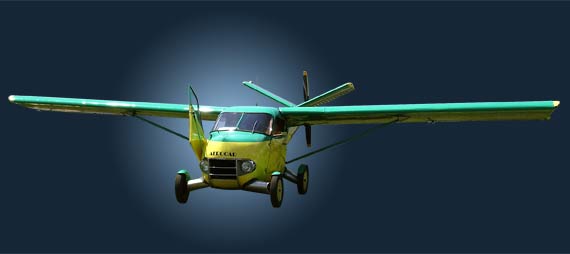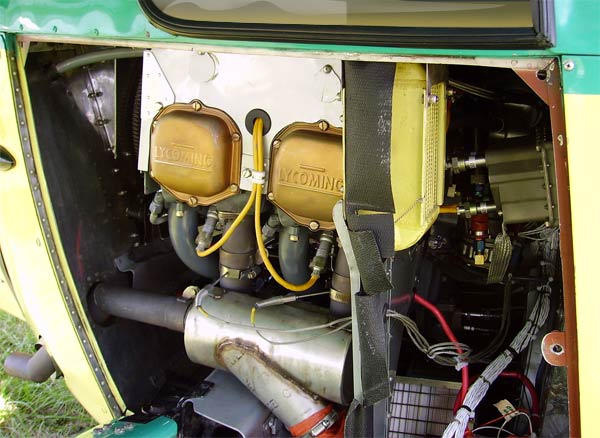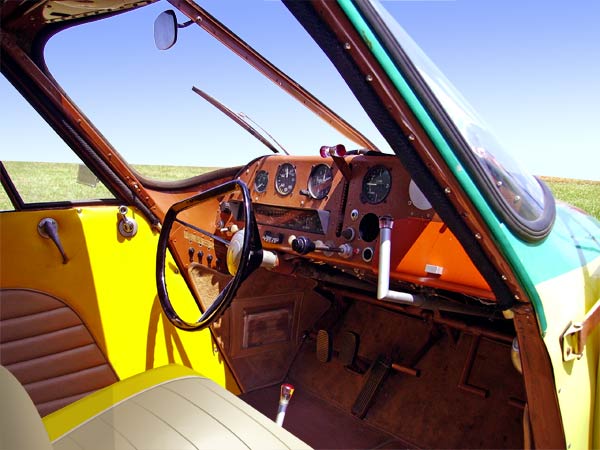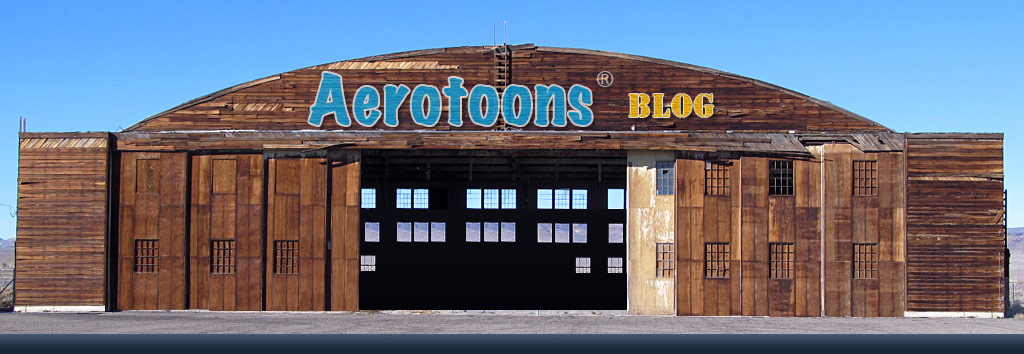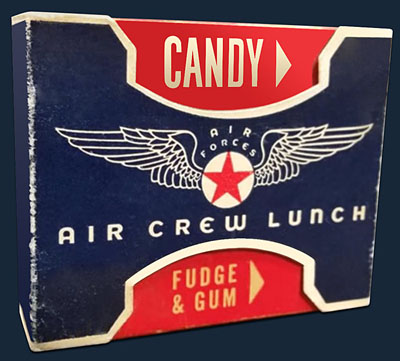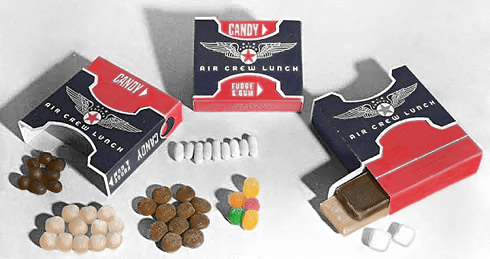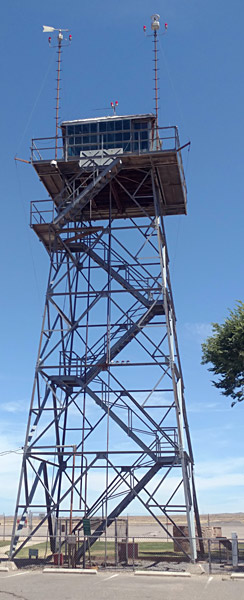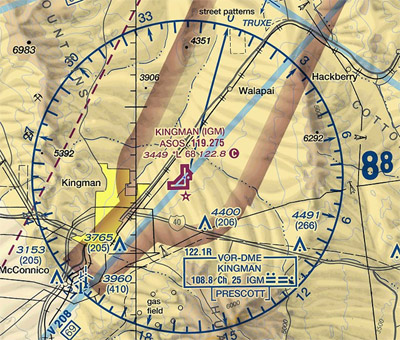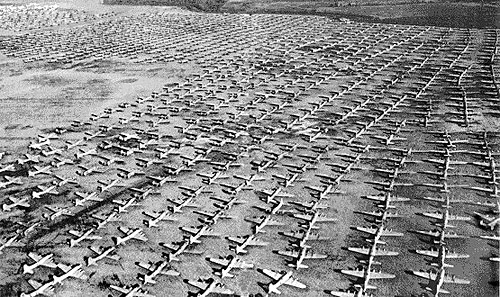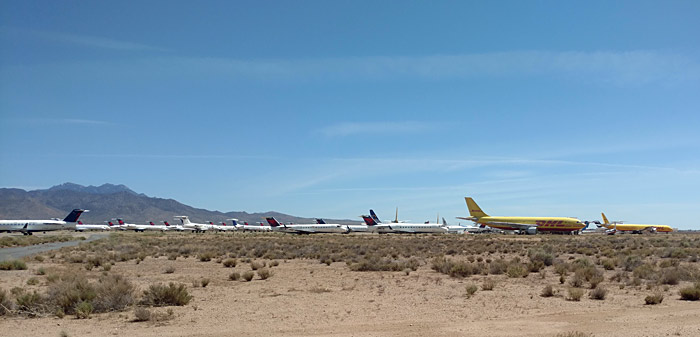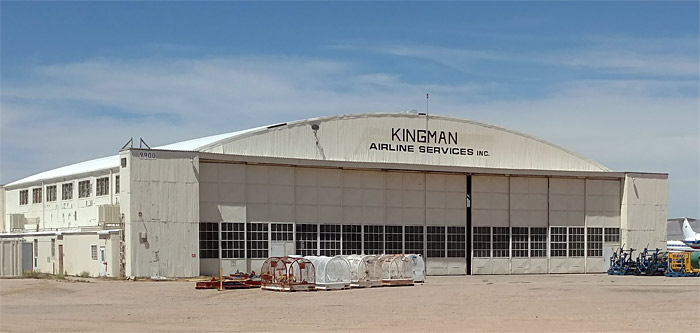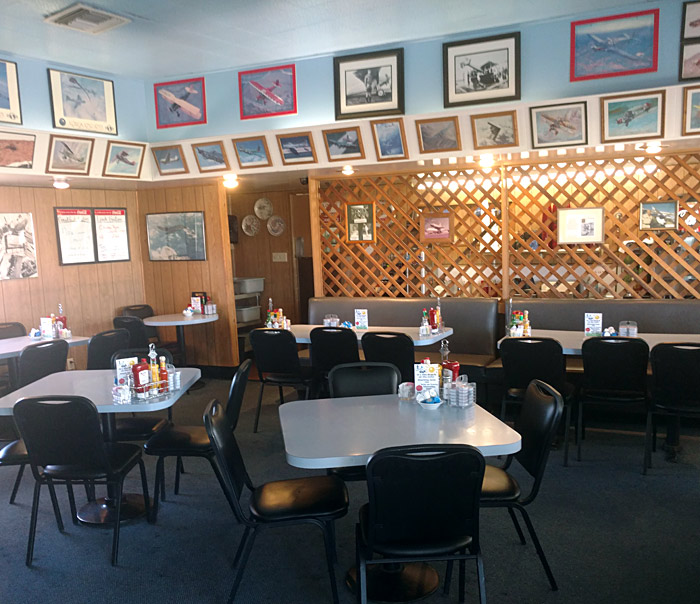
|
|
Back in my early days as a Flight Instructor we used to fly our dual cross country training flights to an airport in Ohio because of a great "on airport" restaurant. Across from the restaurant sitting out on the ramp was a Globe Swift. It was bare aluminum and pretty cool looking, I wonder where it is today?
|
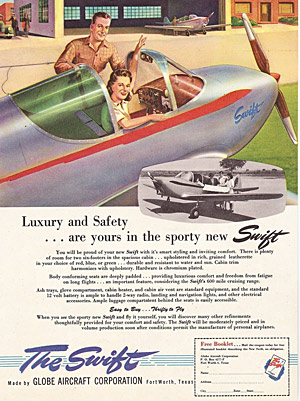 The Globe Swift was designed by Mr. R.S. "Pop" Johnson in 1940 and is a light, two-seat sport monoplane with retractable main landing gears and usually equipped with a constant speed propeller (although a fixed pitch propeller is also listed in the original May 7, 1946 type certificate number ATC#-766.)
The original prototype designed by Mr. R.S. Johnson in 1940 was made of metal tubing covered with fabric and had Duraloid wings and tail surfaces. Duraloid is a (Bakelite-bonded plywood) process developed by Dr. Robert Nebesar.
Johnson's Swift became the Globe GC-1, it was somewhat underpowered with a 65hp Continental engine which was subsequently replaced with a more robust 80 HP Continental. (Type Certificate ATC# 753 was issued in May, 1942 for this airplane.)
Toward the end of the war, Mr. R.S. "Pop" Johnson and Chief Engineer Mr. K.H. "Bud" Knox re-designed the GC-1 to become a new, "all-metal," airplane and powered it with a 85 HP Continental, and named it the Globe Swift GC-1A (May 7, 1946 type certificate number ATC#-766.)
The first prototype GC-1A flew in January, 1945 and the first production model was completed in November, 1945. Only 408 GC-1A airplanes were built.
The GC-1A was sluggish and performed poorly with the Continental C-85 HP engine so it wasn't long before a new six cylinder 125 HP Continental C-125 version of the airplane was being offered. Type Certificate ATC# 776 was issued in September 20, 1946 for GC-1B and with this new engine, performance improved dramatically!
|
 The Ft. Worth, Texas located Globe Aircraft Company soon became backlogged with orders so they entered a contract with the nearby (newly founded) Grand Prairie, Texas company TEMCO (Texas Engineering & Manufacturing Company) to build GC-1B Swifts under sub-contract.
833 total Swift GC-1B's were built (504 by Globe Aircraft and 329 by TEMCO).
In six months there were more airplanes than orders and Globe Aircraft Company filed for bankruptcy and TEMCO took it over in August 1947.
TEMCO continued to build and modify 260 more Swifts until they ended production on August 23, 1951.
|
| Globe Swift GC-1B |
| • Manufacturer: Globe Aircraft/TEMCO |
| • Total Built: 1,521 (including prototypes) |
| • Original Base Price: $3750-$4000 |
| • Varients: 3- (GC-1A, GC-1B, T-35 “Buckaroo”) |
| • First Flight: The prototype GC-1A made its initial test flights in January, 1945 |
| • Crew: 1 |
| • Capacity: 2 |
| • Wingspan: 29 ft 4 in. (8.94 m) |
| • Wing Area: 132 ft² (12.3 m²) |
| • Airfoil: Root NACA 23015, Tip NACA 23009 |
| • Height: 6 ft 2 in. (1.88 m) |
| • Length: 20 ft 10 in. (6.35 m) |
| • Empty weight: 1,370 lb. (621 kg) |
| • Maximum Takeoff Weight: 1,710 lb. (766 kg) |
| • Total Fuel: 27.8 gals. |
| • Powerplant: 1 × Continental C125 six cylinder, four-stroke aircraft engine, 125 hp (93 kW) |
| Performance |
| |
|
| • Cruise speed: 122 kts (140 mph; 226 km/h) |
| • Climb Performance: 700 ft/min (3.6 m/s) |
| • Never Exceed speed: 161 kts (185 mph; 298 km/h) |
| • Range: 1,000 nm (1,151 mi; 1,852 km) |
| • Service Ceiling: 18,000 ft. (5,500 m) |
| |
